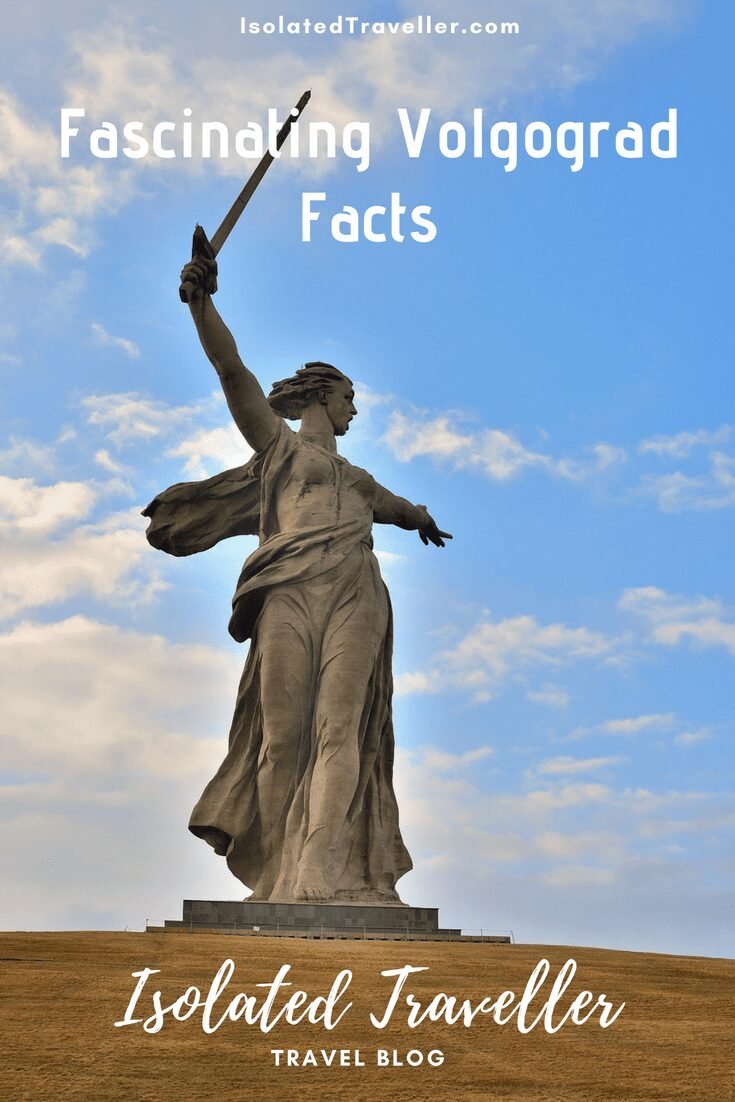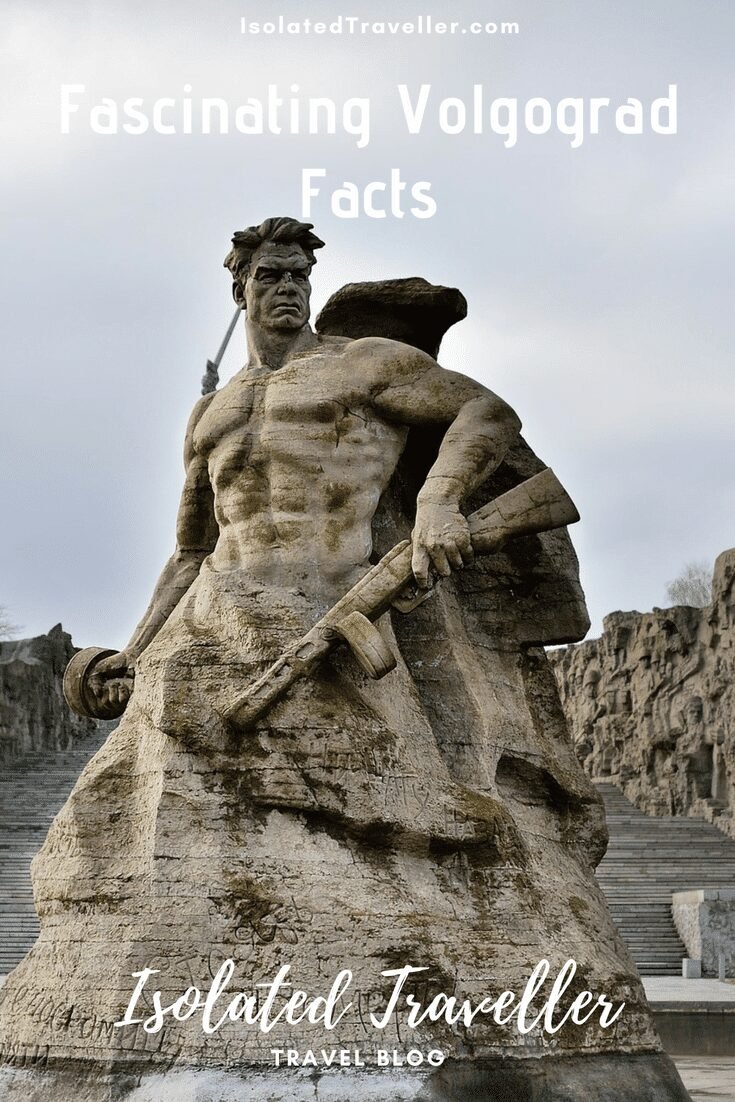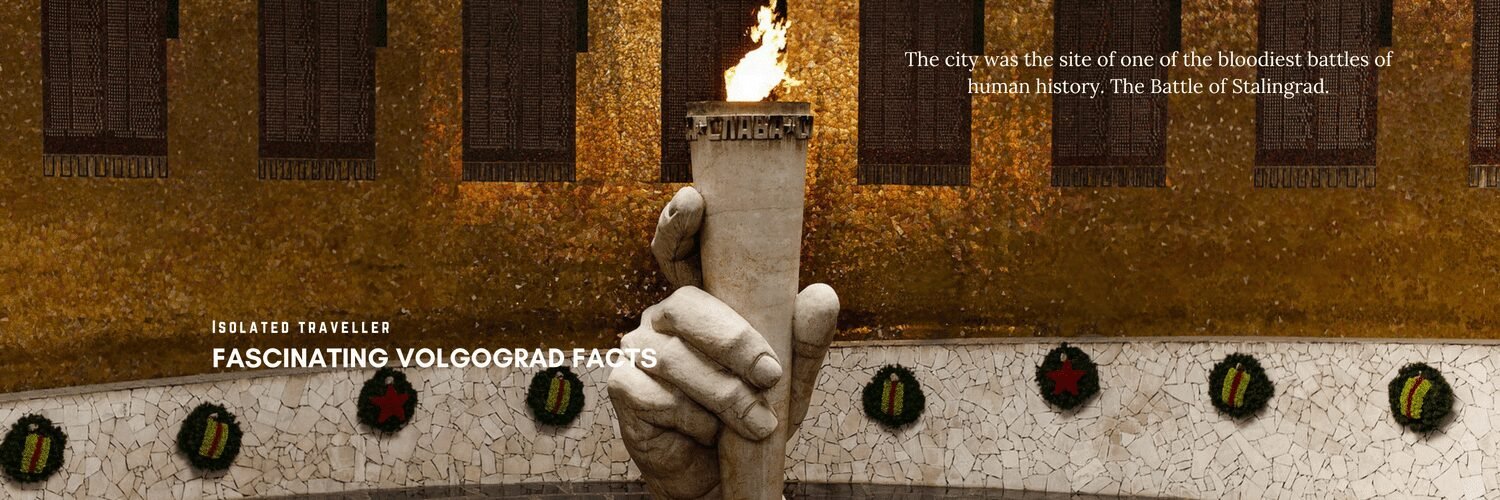Fascinating Volgograd Facts
Volgograd, formerly Stalingrad. It was the site of WWII’s Battle of Stalingrad, commemorated by a huge statue.
-
The city was the site of one of the bloodiest battles of human history. The Battle of Stalingrad.
-
The Motherland Calls is a gigantic monument commemorating the Battle of Stalingrad. The Motherland Calls is the world’s tallest female statue.
-
The Motherland Calls is the world’s tallest female statue and The tallest statue in Europe. At 85 metres it is almost twice the height of the Statue of Liberty in New York.
-
Volgograd formerly called Tsaritsyn between 1589–1925 and Stalingrad between 1925–1961.
-
Volgograd was the first city in Russia to have a Tram line.
-
Volgograd’s first bridge that goes over the Volga River opened in 2009, construction of the bridge took 13 years to build, costing £275 million, nicknamed ‘The Dancing Bridge’.
-
Volgograd has 22 sister cities: Cologne & Chemnitz, Germany; Hiroshima, Japan; Chennai, India; Port Said, Egypt; Turin, Italy; Liège, Belgium; Kemi, Finland; Ostrava, Czech Republic; Coventry, United Kingdom; Cleveland, United States; Toronto, Canada; Chengdu & Jilin, China; Yerevan, Armenia; Kruševac, Serbia; Ruse, Bulgaria; Huntingdon, United States; Orlando, United States; Baku, Azerbaijan; Ardabil, Iran.
-
Volgograd hydroelectric power plant is the biggest in Europe.
-
A number of communities in France and Italy have streets or avenues named after Stalingrad, hence Place de Stalingrad in Paris and the Paris Métro station of Stalingrad.
-
Volgograd was founded as the fortress of Tsaritsyn in 1589 to protect newly acquired Russian territory along the Volga.
-
After World War II Ended Volgograd was totally rebuilt.
-
Kremlin declared Volgograd as a “Hero City”
-
Volgograd is the longest city in Russia, almost 100 kilometres in length.
-
The Prodolnaya Ulitsa is the longest street in Russia, measuring over 50 kilometres long.
-
Volgograd is one of the Host Cities for 2018 FIFA World Cup Russia, hosting four world cup matches.
-
A new modern stadium, Volgograd Arena, was built for the world cup on the bank of the Volga River to serve as the venue. The stadium has a seating capacity for 45,000 people.
-
Volgograd is a major rail hub, serving as one of the two principal rail gateways to Southern Russia.
-
European route E40, the longest European route connecting Calais, France with Ridder, Kazakhstan, passes through Volgograd.
-
Nine days every year, the city may be officially referred to as “Stalingrad”.
-
Volgograd hosts one of the few floating churches in the world, the floating church of Saint Vladimir of Volgograd.
PIN IT FOR LATER!



